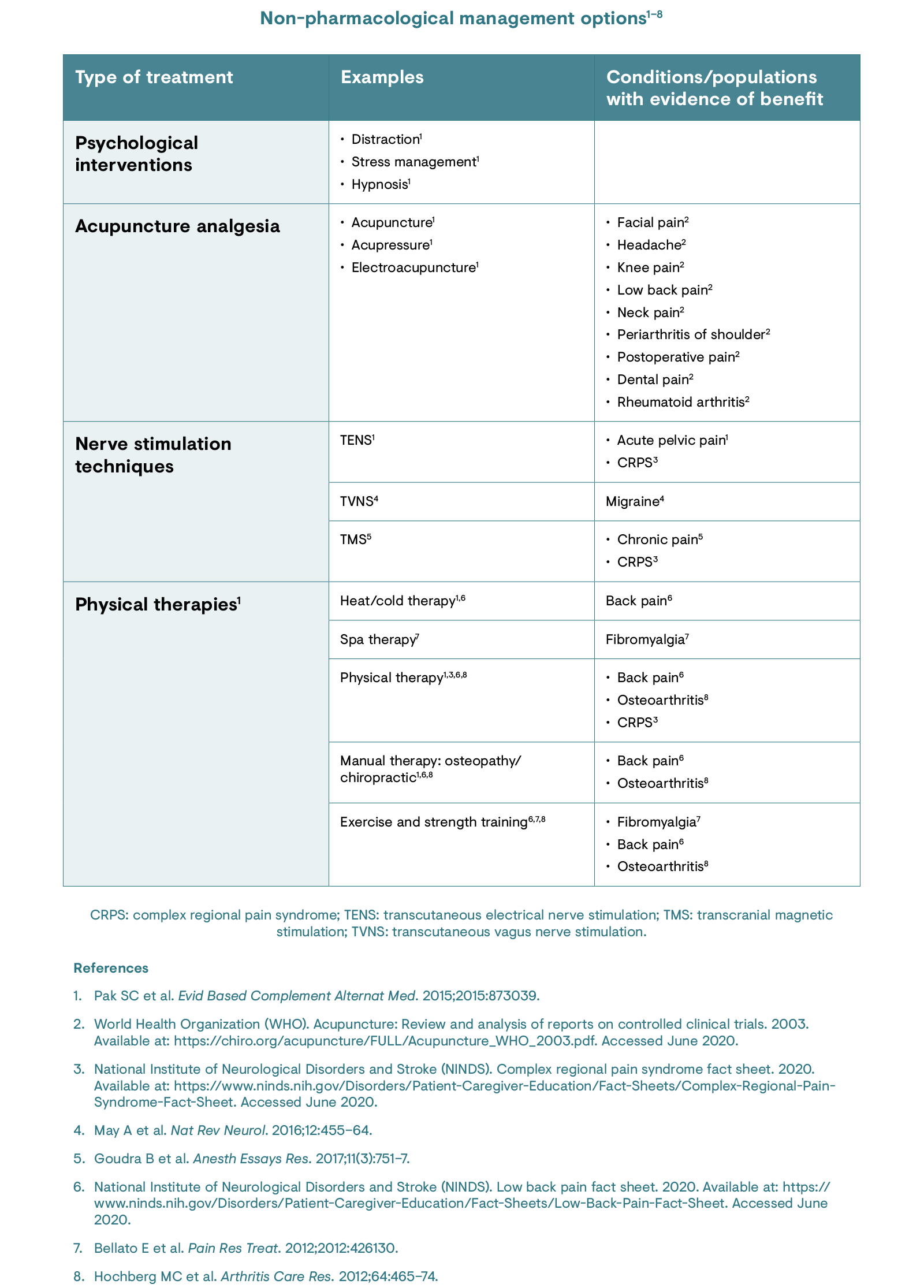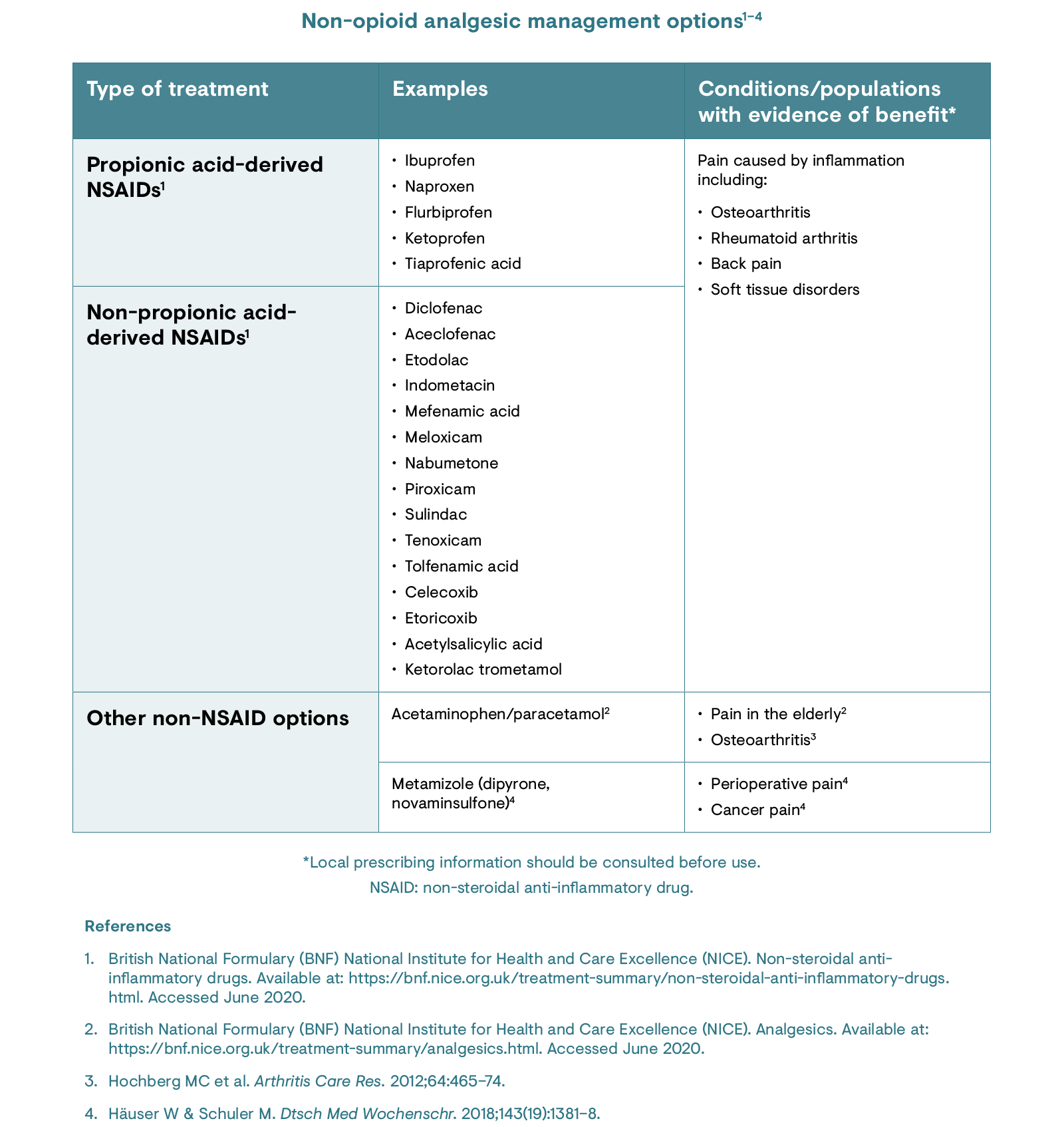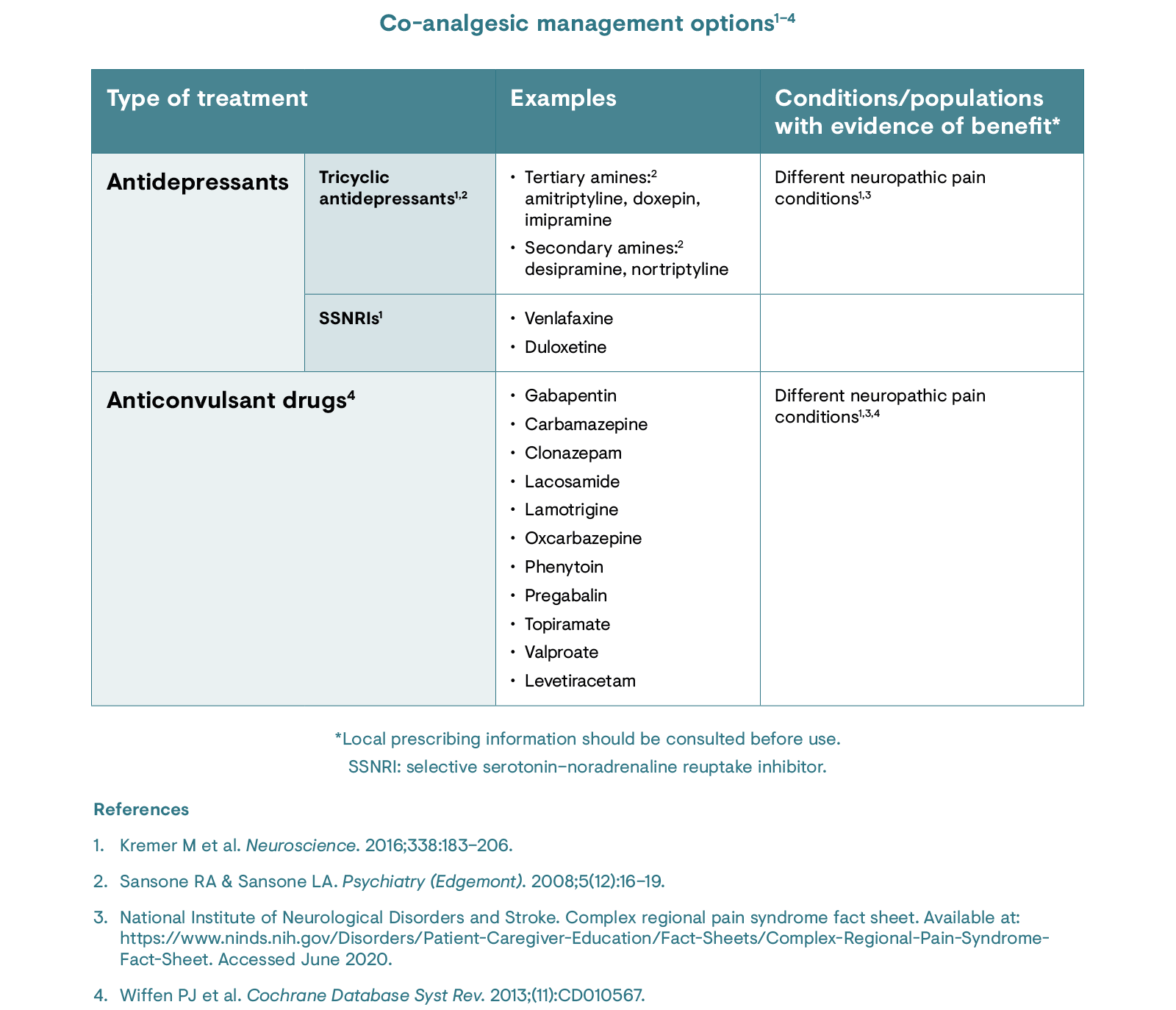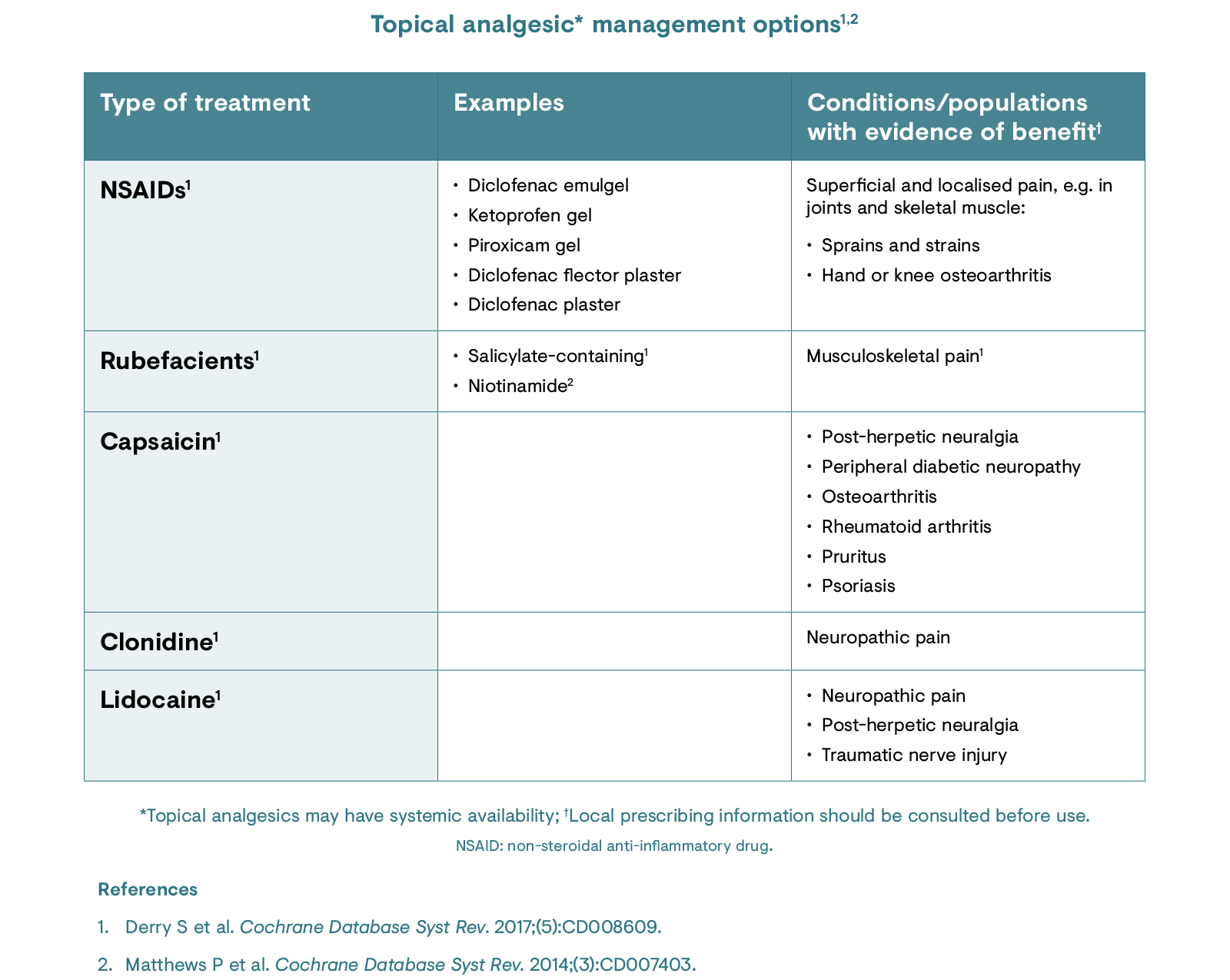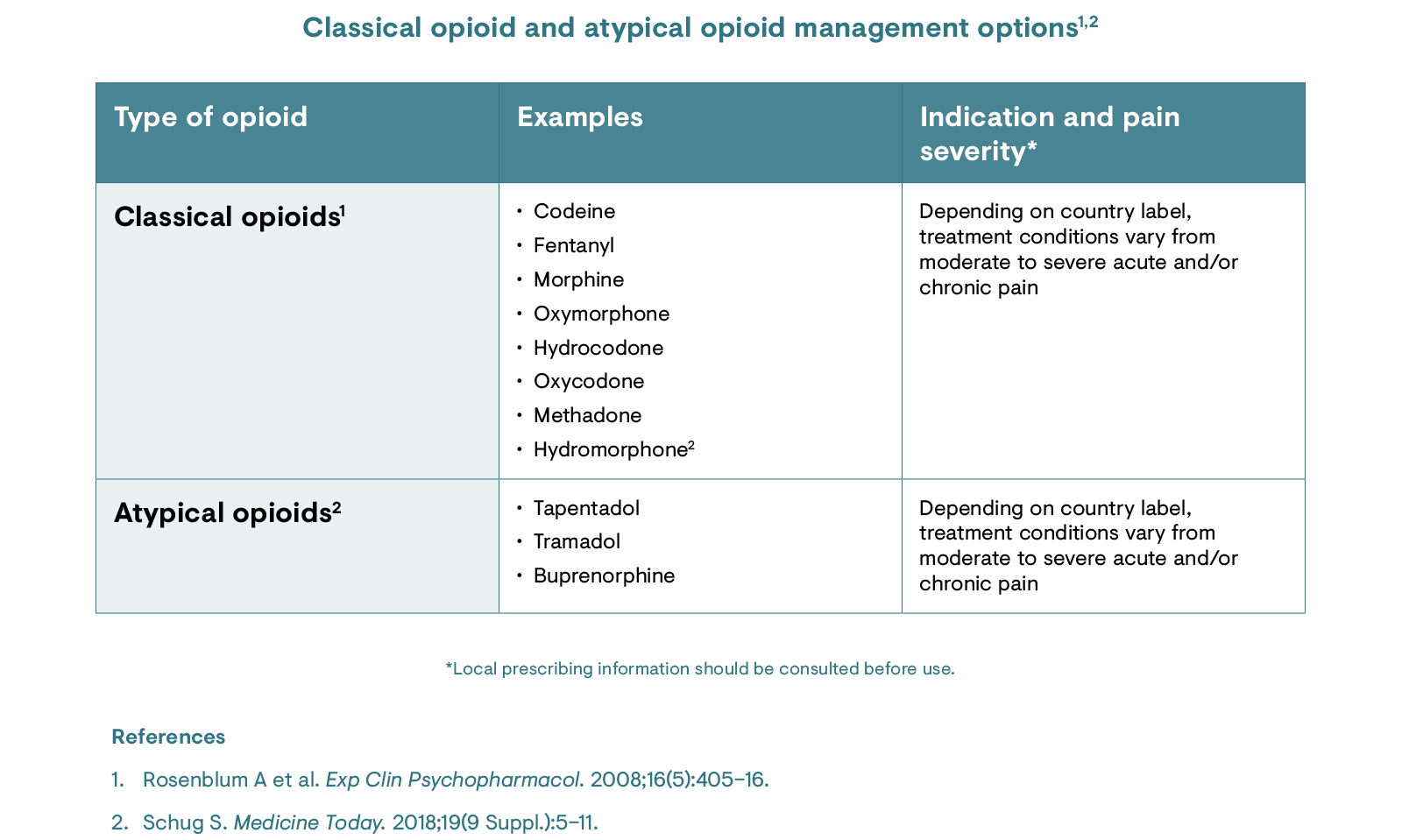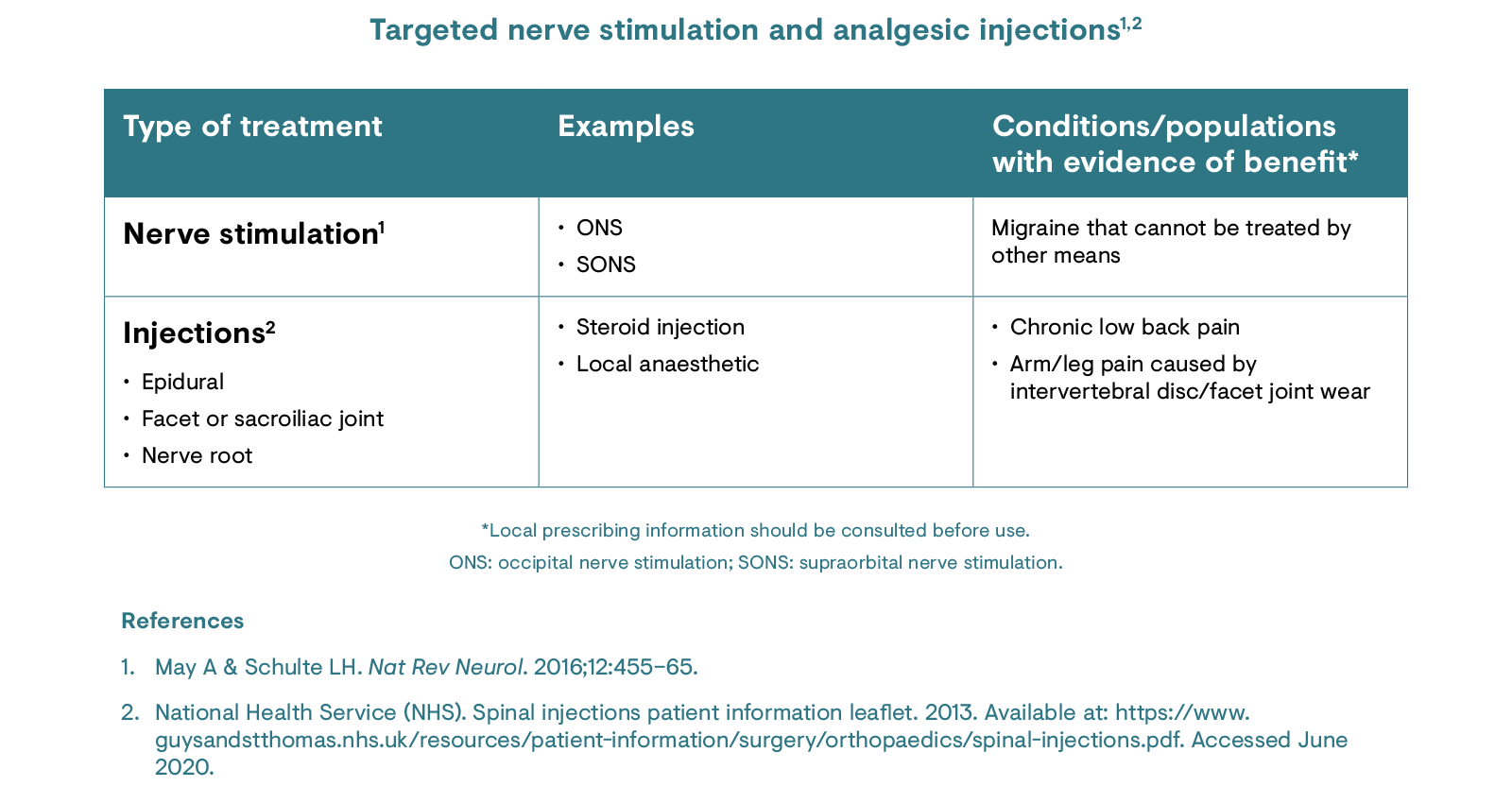
PAIN BASICS
Topical analgesics
Topical analgesics can be applied directly to the skin at specific areas of pain.1 The group of topical analgesics comprises very different mechanisms of action and can therefore not be described as one entity apart from the mode of application being topical. Topical non-steroidal anti-inflammatory drug (NSAID) analgesics inhibit cyclo-oxygenase enzymes, limiting the production of prostaglandins; for more information on NSAIDs, please see the non-opioid analgesics section.1 Rubefacients cause irritation of the skin, which is believed to relieve musculoskeletal pain.1 Other types of topical analgesics can bind to nociceptors in the skin and after repeated application, this can lead to ‘defunctionalisation’, which can reduce pain in the area.1 Topical analgesics are less invasive than other treatments and their administration may limit systemic adverse events by minimising systemic concentrations of the drug.1 However, local side effects including irritation, itching and rash may occur with topical analgesics.1
References
- Derry S et al. Cochrane Database Syst Rev. 2017;(5):CD008609.



